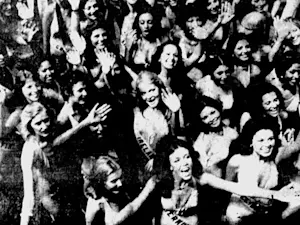
How One Woman Changed Forensic Science Forever
Frances Glessner Lee, born in 1878, didn't let a complex series of obstacles stop her from pursuing her passion for crime scene investigation. Lee overcame challenges to become America's first female police captain and a pioneer in improving crime scene investigations. Read on to learn more about the "Mother of Forensic Science."
Early Life
Frances Glessner Lee was born on March 25, 1878, in Chicago, Illinois, into a life of privilege. As the only daughter and youngest child in a wealthy family that had made its fortune in farming machinery, Lee grew up in the socialite circles of Chicago high society. Her upbringing was typical for someone of her status, marked by a quick marriage in 1898 to a law partner with connections to her father.
After divorcing in 1929, Lee moved to New Hampshire where she met Dr. George Buress Magrath, a medical examiner. This friendship sparked her interest in legal medicine – the name for forensic science at the time. Lee was morbidly interested in Magrath's tales of crime scene investigation.
Lee yearned to attend Harvard Medical School, but women were not admitted until 1945. Instead, she leveraged her wealth and friendship with Magrath to work her way into the institution through an alternate pathway.

Achievements
In 1931, Lee made a significant donation to Harvard University, establishing the first Department of Legal Medicine and the Magrath Library of Legal Medicine. In effect, she became a well-respected amateur scholar in the field.
Crime scene investigation was often mismanaged at this time. Recognizing the lack of proper training and the frequent mishandling of evidence by police officers, Lee sought to help clean up the process by hosting seminars and meetings in crime scene preservation and investigation. These meetings eventually morphed into week-long seminars held at Harvard.
Contributions
Lee's most famous contribution to forensic science came in the 1940s when she began creating the "Nutshell Studies of Unexplained Death," a series of meticulously detailed miniature crime scene dioramas. Lee, a talented artist, designed these dollhouse-sized recreations of true crime scenes to train investigators to carefully observe every minute detail at a crime scene. Each diorama was crafted with painstaking scrutiny, from the blood spatter patterns to the position of bodies, and even tiny, hand-knit stockings. The dioramas became essential tools in her training seminars, helping officers practice their skills in a controlled environment.
 Nutshell Studies of Unexplained Death, Garage. Photo by Lorie Shaull under CC BY-SA 4.0.
Nutshell Studies of Unexplained Death, Garage. Photo by Lorie Shaull under CC BY-SA 4.0.
Lee's work revolutionized the field of forensic science. Her contributions were so impactful that she was named the first female police captain in the United States and earned the title "Mother of Forensic Science." Her dioramas, which remained in use for training purposes until 2020, continue to be recognized for their artistic and scientific value.
A Lasting Legacy
Frances Glessner Lee died in 1962, leaving behind a legacy that continues to influence the field of forensic science. Her "Nutshell Studies of Unexplained Death" are still housed at the Baltimore Office of the Chief Medical Examiner. Lee's pioneering work, combining art and science, has ensured that she remains a central figure in the history of forensic investigation.
References: The Mother Of Forensic Science: How A Chicago Woman Changed Crime Scene Investigations | Murder Is Her Hobby: Frances Glessner Lee and The Nutshell Studies of Unexplained Death | Women at Harvard University























